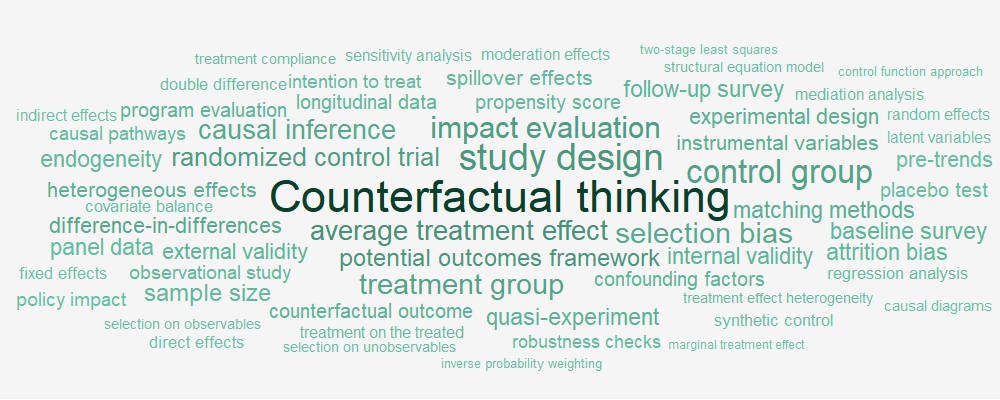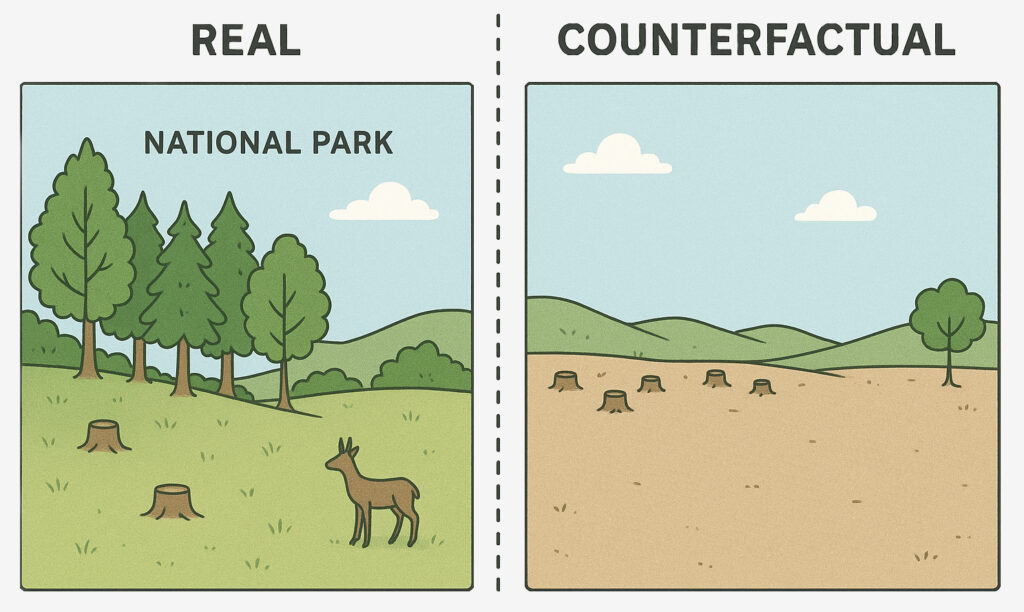Introduction
What is Impact Evaluation?
To design and improve evidence-based conservation programs, practitioners and other implementers need high-quality empirical evaluations that not only assess program impacts, but also test the validity of the theories of change that underpin program design. Impact evaluation provides a framework for doing this: it involves diverse methods used to systematically assess the causal impacts of interventions, programs, or policies, testing both their effectiveness and the mechanisms through which they work.

A particularly powerful way to assess impact is by comparing observed outcomes with an estimate of what would have happened in the absence of an intervention – or if it had been implemented differently. By constructing this hypothetical “counterfactual scenario”, evaluators can isolate the causal effect of a program. Such methods typically rely on experimental or quasi-experimental designs, including randomised controlled trials, difference-in-differences, matching, or instrumental variables, to create a credible comparison group.

Would the counterfactual have been deforestation and land-use change?
In addition to asking about impact, evaluators may also want to understand how and why interventions generate change. Directed Acyclic Graphs (DAGs) are useful visual and analytical tools that can help clarify causal assumptions and identify confounders (variables that influence both treatment and outcomes), while qualitative methods such as process tracing, contribution analysis, or realist evaluation can provide insights into the perspectives of stakeholders, pathways of change, and contextual factors shaping outcomes.
Ultimately, there is no single “best” method. Both quantitative and qualitative approaches can yield powerful insights, provided they are implemented rigorously and transparently. In practice, the most useful evaluations often require creativity, problem solving, and the integration of multiple mixed methods. This is especially true in conservation, where programs operate in messy, dynamic socio-ecological systems, outcomes may unfold over long time horizons, and impacts may be multidimensional.
Through advancing and sharing these diverse approaches, the Impact Evaluation Working Group supports conservation practitioners and researchers in generating stronger evidence to guide action.
Other basic reading
1. The Book of Why, by Judea Pearl & Dana Mackenzie (2018)
2. Causal Inference, by Paul R. Rosenbaum (2023)
3. Impact Evaluation in Practice, by Paul J. Gertler, Sebastian Martinez, Patrick Premand, Laura B. Rawlings & Christel M. J. Vermeersch (2016)
